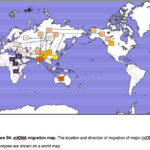
World Science en Route from Out-of-Africa to Out-of-America: First Stop is Out-of-Asia
bioRxiv doi: https://doi.org/10.1101/101410 Yuan, Dejian, Xiaoyun Lei, Yuanyuan Gui, Zuobin Zhu, Dapeng Wang, Jun Yu, and Shi Huang Modern Human Origins: Multiregional Evolution of Autosomes and East Asia Origin of Y and mtDNA Recent studies have established that genetic diversities are mostly maintained…
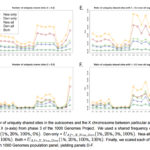
Peruvian Amerindians Have Strongest Genetic Ties to Archaic Hominins
Molecular Biology and Evolution (advance publication, October 18, 2016) Signatures of archaic adaptive introgression in present-day human populations Racimo, Fernando, Davide Marnettob, and Emilia Huerta-Sánchez Comparisons of DNA from archaic and modern humans show that these groups interbred, and in…
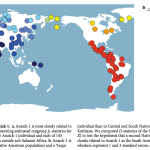
The Solutrean Hypothesis Meets Mainstream Science: A False Response to a Real Problem vs. A Real Response to a False Problem
World Archaeology 46, no. 5 (2014): 752-774. DOI: 10.1080/00438243.2014.966273 Solutrean Hypothesis: Genetics, the Mammoth in the Room Stephen Oppenheimer, Bruce Bradley, and Dennis Stanford. Abstract The Solutrean hypothesis for the origin of the Clovis archaeological culture contends that people came from…
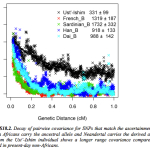
Ancient Ust’-Ishim DNA as Seen From the Americas
Nature 514, 445–449 (23 October 2014) doi:10.1038/nature13810 Genome sequence of a 45,000-year-old modern human from western Siberia Qiaomei Fu, Heng Li, Priya Moorjani, Flora Jay, Sergey M. Slepchenko, Aleksei A. Bondarev, Philip L. F. Johnson, Ayinuer Aximu-Petri, Kay Prufer, Cesare de Filippo,…
Web Gems, November 22, 2013
I’ve been monitoring global web responses to Raghavan et al.’s “Upper Palaeolithic Siberian Genome Reveals Dual Ancestry of Native Americans” that appear in the comments sections on Dienekes, Gene Expression and Eurogenes sites. The Web Gem Reward of this week goes…
Ancient Mal’ta and Afontova Gora DNA Again
Now that Michael Balter’s news piece is out, I can retrieve my original post written in the wake of Eske Willerslev’s presentation at the Paleoamerican Odyssey conference in Santa Fe. Eske Willerslev‘s paper was on ancient DNA from the Mal’ta and Afontova…
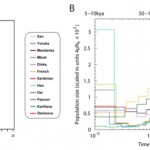
A High Coverage of the Denisovan Hominin
Science 30 August 2012 DOI: 10.1126/science.1224344 A High-Coverage Genome Sequence from an Archaic Denisovan Individual Matthias Meyer, Martin Kircher, Marie-Theres Gansauge, Heng Li, Fernando Racimo, Swapan Mallick, Joshua G. Schraiber, Flora Jay, Kay Prüfer, Cesare de Filippo, Peter H. Sudmant,…
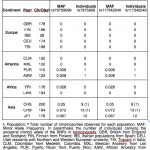
Neandertal Admixture in microRNA Genes
Molecular Biology and Evolution (27 January 2012), doi:10.1093/molbev. An Ancestral miR-1304 Allele Present in Neanderthals Regulates Genes Involved in Enamel Formation and Could Explain Dental Differences with Modern Humans Lopez-Valenzuela, Maria, Oscar Ramirez, Antonio Rosas, Samuel Garcıa-Vargas, Marco de la…
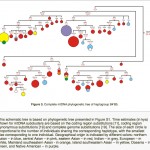
The Origin of mtDNA haplogroup B: 9-bp deletion in America, Asia and Africa
PLoS ONE 7(2) 2012: e32179. doi:10.1371/journal.pone.0032179 Complete Mitochondrial DNA Analysis of Eastern Eurasian Haplogroups Rarely Found in Populations of Northern Asia and Eastern Europe Derenko M., Malyarchuk B., Denisova G., Perkova M., Rogalla U., et al. Abstract. With the aim…
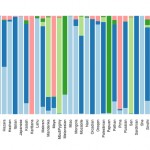
American Indians, Neanderthals and Denisovans: PCA and ADMIXTURE
Dienekes continued his search for “archaic admixture” in world populations. This time he blended ADMIXTURE and PCA approaches to plot 5 composite populations detected by ADMIXTURE in the Harvard HGDP set. American Indians are back in. The ADMIXTURE plot replicates…
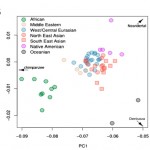
American Indians, Neanderthals and Denisovans: Insights from PCA Views
Dienekes posted a SNP PCA showing the relative position of a sample of modern human populations from the Harvard HGDP along the axes formed by Chimpanzees, Denisovans and Neanderthals. On the broad-view PCA, the red dot indicates Chimpanzees, the green…
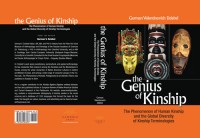
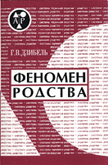
Recent Comments